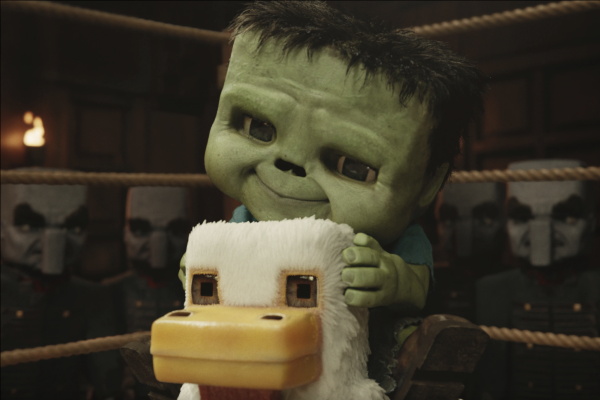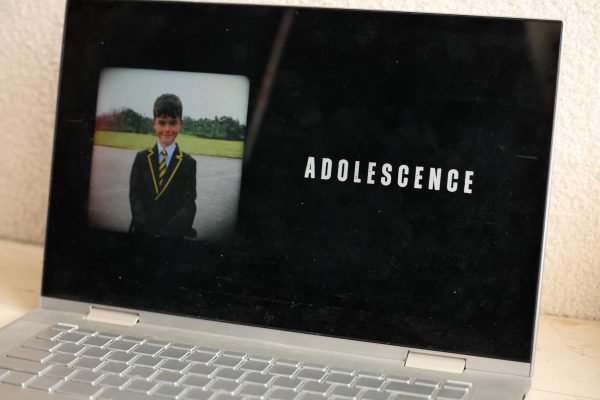Netflix’s “DAHMER – Monster” Balances Between Art and Exploitation
Netflix dropped a bomb on us the other week with Ryan Murphy’s “DAHMER – Monster: The Jeffrey Dahmer Story” which climbed to the status of the most-watched TV show on the platform. This eerie take on the Jeffrey Dahmer story features the remarkable Evan Peters, who hones in a monotone midwestern accent and off-putting manner to make for an incredibly believable Dahmer. The show explores the upbringing of Dahmer, the crimes committed and the aftermath of his heinous conduct, all with impressive accuracy compared to previous renditions of the story. Given the grim subject matter and its basis in reality, many have had moral objections to the production of this series, for the sake of the victims. The producers demonstrate some awareness of this, but whether they bypass the exploitation that comes with the true-crime genre, especially in romanticized renditions, is up for debate.
Dahmer’s vile behavior has traumatized a network of real-life victims on a grand scale. In my eyes, if you are going to display his conduct front and center for all those traumatized to see, the question of whether the show justifies its existence must be asked. For a significant amount of time, we are taken along for the ride with Jeffrey as he mercilessly butchers an unholy amount of people, without much aim. It is through the character Glenda, Dahmer’s neighbor, that this show transcends being yet another gory true-crime narrative to satisfy our murder-obsessed society. In highlighting the police misconduct that transpired in handling Dahmer, this show explores themes of racism and homophobia, pertinent to this era. Despite steadfast attempts to expose Dahmer’s misconduct to police, Glenda’s outreach falls on deaf ears, and she is forced to stand idly by as more people get mutilated. The show makes it clear that she is being ignored because of her race and goes further to show she is being ostracized at work for her efforts. She is not the only one subject to racism. Mrs. Hughes, the Black mother of a victim, is shrugged off when reporting her missing son and is asked about his involvement in gang violence and drugs. The Sinthasomphone family, hailing from Laos, whose son fell victim to Dahmer, were subject to multiple racist calls. Homophobia, on the other hand, is emphasized to a lesser degree, but the general detestation for and uncomfortability with the homosexual lifestyle by parents and the police is apparent. These two factors, racism and homophobia, left Dahmer’s victims much more vulnerable and contributed to how he got away with it for so long.
I was impressed by the perspective in which the producers of this series chose to go with; the lack of gore, common to the true-crime genre, was refreshing, and did not sacrifice any eeriness or intensity. Scenes were often quiet and meditative, which accentuated Dahmer’s off-putting nature. Murphy utilized the fact that most people generally know what happens, to create powerful implications that are honestly more jarring than seeing the vile sights straight up. For lengths of time, the storyline departs from Jeffrey and explores the upbringings of his victims, particularly Tony Hughes, to establish a sentiment with the audience. I support this creatively, in that it makes the show more emotionally riveting, and I support it morally, in that it does the victims justice and gets away from the exploitation that comes with true crime. Along these lines, I am glad the producers didn’t do much in terms of humanizing Jeff, for the victims’ sake; after all, the show is titled “Monster.” That being said, for the majority of victims besides Hughes, not much justice is done; their unimaginable fates were displayed on television, for the families to see, without so much as a notification of warning. Though I am glad Jeffrey was not
romanticized, the accuracy in which he was portrayed was painstaking, especially for family members who took to Twitter to claim they’d been “retraumatised.”
While watching Dahmer in an interview on television tell his side of the story while the eyes of the nation are glued to the screen, Glenda exclaims, “This isn’t a Halloween story, this is my life.” Murphy made the conscious decision to include that to show awareness of the exploitative nature of producing this series. On the other hand, Dahmer’s father Lionel, after the conviction of his son, was depicted as having no problem monetizing the crimes via his book. Though these two excerpts are included and no humanizing of Dahmer was exhibited, and though I really enjoyed this series, I still believe “DAHMER – Monster: The Jeffrey Dahmer Story” is guilty of the same crime as Lionel’s book and the news interview giving Dahmer the spotlight.













































































































































































































